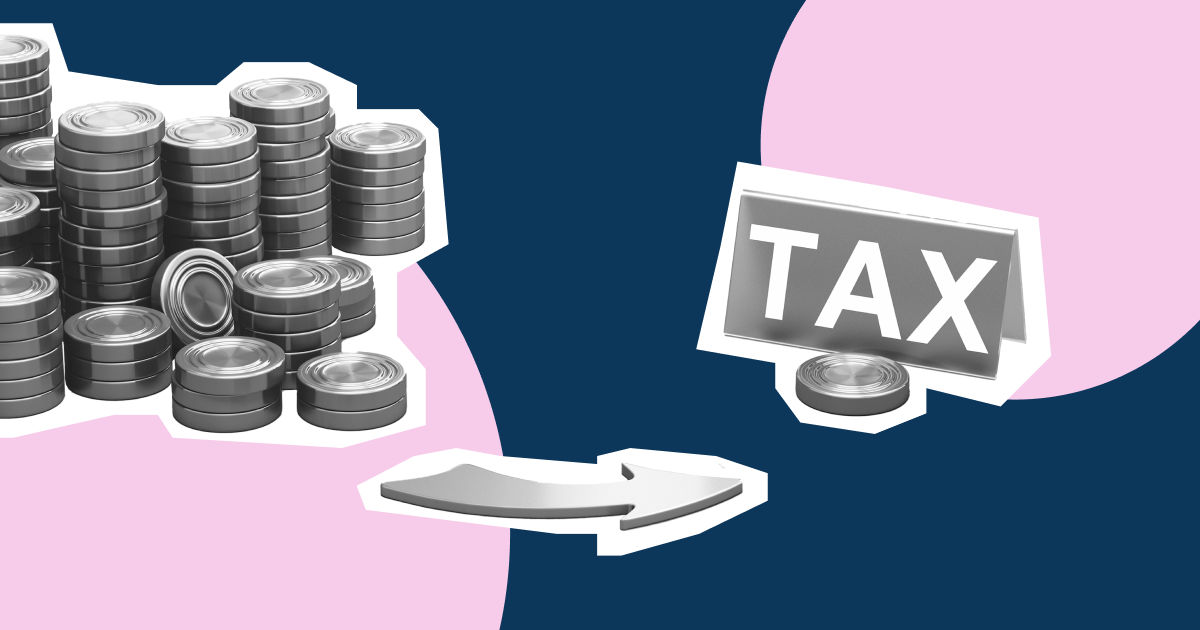Summary
Singapore’s ecommerce market looks poised for growth. A report by investment arm Temasek Holdings and tech giant Google revealed that the market will grow more than five times to be worth S$7.5 billion by 2025.
Having sufficient financial resources can make the difference between businesses that are able to tap into these growth opportunities and thrive, and those that lose out in the competitive ecommerce landscape. Yet small business owners are often hindered by the lack of financial support; Alexis Lanternier, CEO of Lazada Singapore has identified working capital as “a barrier for many aspiring entrepreneurs”.
What can help is a financing solution that’s versatile and easy to access - and here’s where a line of credit comes into play. In our article below, we’ll dive into:
- How a line of credit works
- Benefits that a credit line brings to e-sellers
- Common ways in which e-sellers use a credit line
- Key questions to help you find the right line of credit for your business
What is a business line of credit, and how does it work for ecommerce financing?
A business line of credit, gives borrowers access to a predetermined sum of capital. It functions like a credit card; you can draw from the sum as and when required (as long as you don’t exceed your credit limit) and interest is charged only on the amount drawn. Once this sum is repaid, your credit limit goes back up.
Benefits that a line of credit brings for ecommerce financing
1. It offers unparalleled flexibility
One of the biggest advantages that a business line of credit offers is flexibility. Once you’ve established a credit line, you’ll get to control when you draw from the line, and how much you want to borrow. Having continual access to funds gives you greater control over your business finances, which leaves you better placed to implement long-term strategies rather than shorter-term, reactive measures.
2. It can be used to finance a variety of business expenses
You’re free to draw from your line of credit to fund a variety of business needs - from inventory purchases, to online marketing campaigns and covering cash flow gaps. There aren’t restrictions imposed on what you can use the funds for - unlike with traditional loans, where you’ll obtain a lump sum amount for a specific purpose.
3. It provides quick access to cash
Once you’ve set up a line of credit, drawing from the credit facility is a quick and convenient way to access working capital. And if you’ve yet to establish a credit line but require funding urgently, applying to alternative lending platforms can be an option as the approval and funding processes may be completed in as soon as 24 hours.
4. It’s a complement to other financing solutions
By tapping into the right mix of financing solutions, you’ll be well-placed to address both the short-term and long-term capital needs of your venture. As an e-seller, you may obtain a term loan to fund a product line expansion, while relying on a credit line to cover day-to-day expenses like payroll or ongoing marketing campaigns.
How ecommerce business owners can use a line of credit for ecommerce financing
E-sellers can draw from a credit line to finance a wide range of expenses. These include:
1. Keeping a well-stocked inventory
Inventory management issues can be a costly problem for businesses both large and small. A study by IHL Group indicated that the overstock and stock shortages amount to a whopping US$1.1 trillion in lost revenue for retailers worldwide. Customer satisfaction is adversely affected too; a GT Nexus survey of 5,000 adults in the US, UK, Germany and France showed that almost half of the respondents blamed the retailer when stockouts occur. Moreover, 64 percent of online shoppers indicated that they’d purchase from another site or store, or abandon their intention to purchase entirely. The impacts are far-reaching - businesses don’t only lose out on sale opportunities, but also the customer lifetime value (LTV) of these individuals. Here’s where a credit line comes into the picture, as your operating cash flow might not always be sufficient for keeping your items fully stocked.
2. Taking advantage of supplier discounts
A credit line provides instant access to capital. That means you’ll be better positioned to take advantage of time-sensitive deals offered by suppliers, as well as purchase stocks in larger volumes to reduce unit costs. Entrepreneur Bill D’Alessandro further explains: “It’s purely a time shifting thing. It allows you to buy inventory before you sell it and hold on to that inventory, or buy another thing else and sell the next day. It can allow you to buy in bulk...even though you might pay three months of interest on your line of credit, you might get a better break from buying in bulk from your supplier. That’s more than the interest that you would pay for your line of credit, so you might come out ahead by buying all at once.”
3. Building out a strong digital presence through marketing
From implementing well-thought-out online marketing strategies to building easy-to-navigate websites and platforms, having a comprehensive digital strategy is key to setting yourself apart from your competitors. Take furniture retailer Castlery as an example. Castlery’s fast-rising growth, which has seen the firm achieving 100 percent year-on-year revenue growth over the past few years can be attributed to its focus on being a digital-first company right from the start. Co-founder Declan Ee explains that from building brand equity to product promotion and customer outreach, Castlery’s entire strategy “had a digital focus from Day One”, and that the firm’s early months were focused on “digital presence and social media engagement”. And while the company has since expanded into having two physical showrooms in Singapore, Ee states that “over 80-90 per cent of its leads” come from its ecommerce platform.Beyond sales, having a strong digital presence can impact upon your business in other ways - it also serves as a channel for for brand discovery, consumer interaction, analytics and feedback. Mr Lee Yee Fung, group director of the lifestyle business group at International Enterprise (IE) Singapore indicates: “This knowledge can then enable retailers to create the right experience for the consumers by balancing physical and online strategies, to differentiate them from other retailers in this competitive space.“
4. Taking advantage of seasonal sale periods
E-sellers across industries and products experience cyclical highs and lows. According to ecommerce service provider aCommerce, the year-end holidays are a key sales period of e-retailers in Southeast Asia, with almost “40 percent of online sales” being generated in the last three months of the year. Major online shopping festivals, such as Alibaba’s Singles Day, as well as promotional campaigns by ecommerce platforms like Lazada also create a significant surge in sales. Soon Qishan, owner of video game store Qisahn.com shared that a joint campaign with Lazada yielded a revenue of S$178,000 over a period of three days - a sum that was 25 times more than normal days. To prepare ahead for the peak season, it can be helpful to obtain a line of credit in advance so you’ll have a pool of funds to dip into to cover marketing, inventory or payroll expenses. The credit line will also enable you even out your cash flow, so that you’re able to maintain operations even as revenue fluctuates during the lull periods.
5. Tapping into tech tools to streamline work processes
Small business owners often need to juggle numerous priorities. In any given day, you may be switching between managing logistics platforms, to building relationships with new suppliers and handling payments. With a credit line, you’ll have the funds you need to invest in digital tools and SaaS platforms, such as cloud-based inventory management or accounting software. These tools can help streamline your work processes, bringing about greater productivity levels and cost savings over the long run. It’s the case for Keyis Ng, co-founder of specialty coffee ecommerce platform Cafebond. Managing his payments took a good two to three days every month, before he automated the process using the DBS-Xero integrated platform.
6. Bridging cash flow gaps
Cash flow management is a tricky issue for e-sellers. You may have landed a sale, yet the payment typically doesn’t come in until days or weeks later - which can make meeting your short term financial obligations a challenge. The problem is further compounded if you’re running a B2B ecommerce business, as you might extend trade credit to your customers. This can create greater inconsistency in your cash flow, particularly if your customers delay their payments. To better manage your cash flow, you may implement strategies such as following invoicing best practices, building positive relationships with vendors and conducting in-depth cash flow reviews regularly, along with tapping into external financing solutions like a line of credit. Do check out our guide on cash flow management for a deeper dive into these strategies.
Choosing a line of credit that best meet your needs
Before you apply for a credit line, you need to be sure that you’re tapping into a solution is a good fit with your needs. Here are a few questions to help you work things out:
How soon do I need the money?
The first step is to look ahead into the upcoming 12 months to examine your capital needs. In doing so, you’ll be better able to identify periods where you require external financing. If your funding needs are immediate, and you aren’t able to wait out an application process with traditional lenders (this can take between three to six weeks), it can be a good option to turn to alternative platforms for a credit line. Depending on your provider, you may gain access to funding in as soon as 24 hours.
How much do I need?
Banks and traditional lenders often have higher borrowing limits, yet small business owners may face difficulty qualifying for these financing solutions. If a lower credit limit is a good fit for your needs, you’ll want to consider turning to online lenders. With Aspire, you’ll be able to obtain a credit line of up to $50,000.
What repayment structure works best for my business?
Most lenders offer a weekly or monthly repayment schedule. Before you apply for a credit line, it’s important that you work out a repayment structure that works for your business, so that you’re able to meet your repayments comfortably.
Do I meet the minimum lending requirements?
Having a stellar credit record, a minimum operational history of two to three years and a minimum annual revenue of $200,000 are lending criteria typically imposed by banks and traditional lenders. Unless you’re running a well-established venture, it can be difficult meeting these lending requirements. It’s a common problem for small business owners across industries - and Lilian Lee, managing director of F&B chain Wheat Baumkuchen is a case in point. In a Channel NewsAsia article, she shared that it was a challenge obtaining bank financing within the first year of running her venture, as her company didn’t have a “track record”. If you’re facing a similar situation, turning to alternative lenders can be an option as online providers often allow for greater flexibility.
Here at Aspire, our lending requirements include having a minimum operational history of six months, as well as a minimum annual sales of $50,000. In addition, you business needs to be registered with ACRA (PTE LTD or LLP companies only), with a local director of at least 30 percent shareholding. If you qualify, you can apply online for an instant credit limit (with free account opening) here.










%201.webp)


.webp)